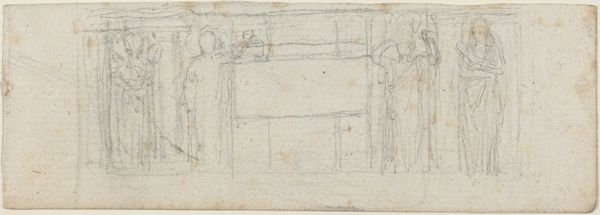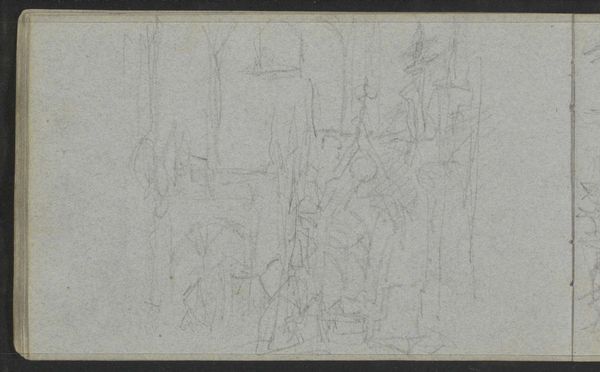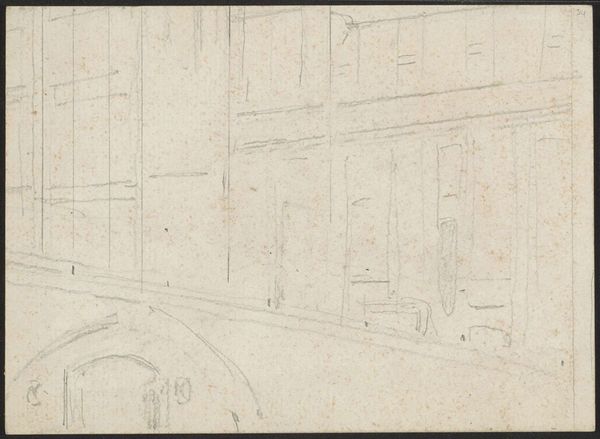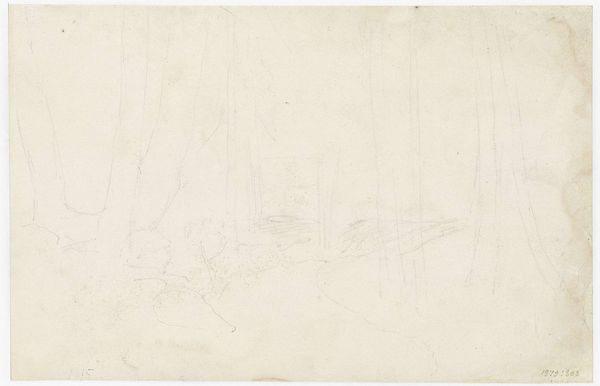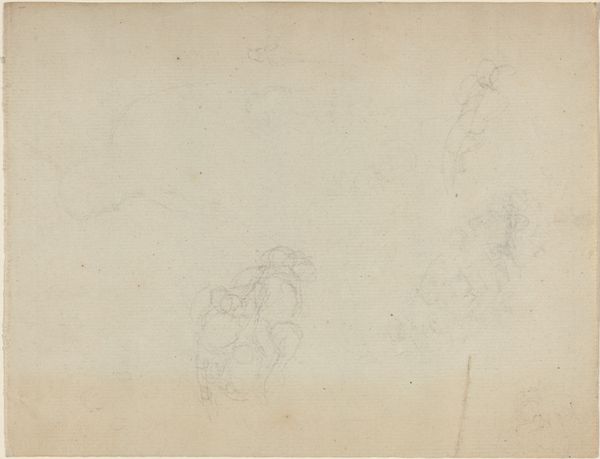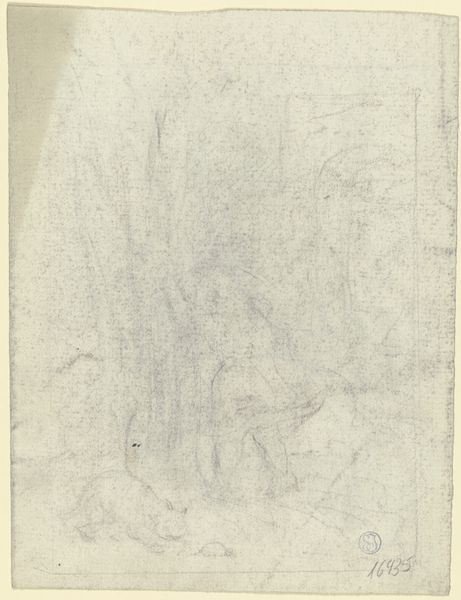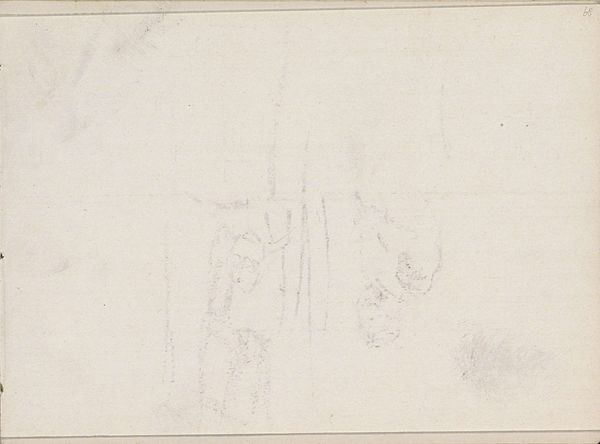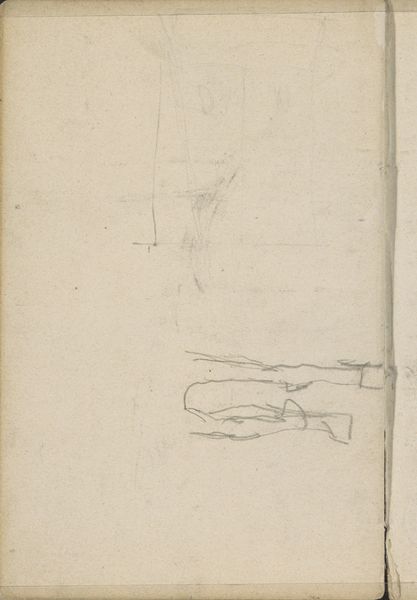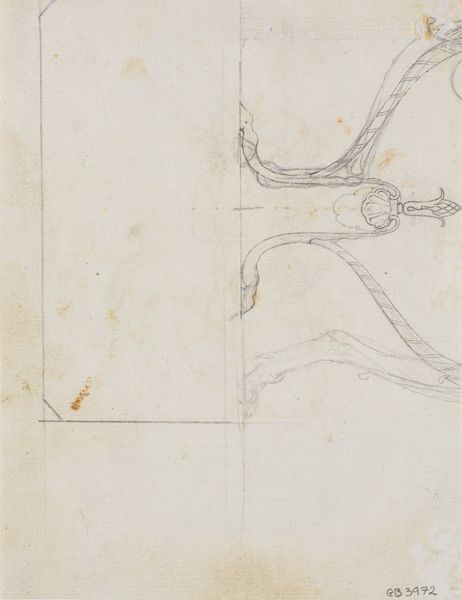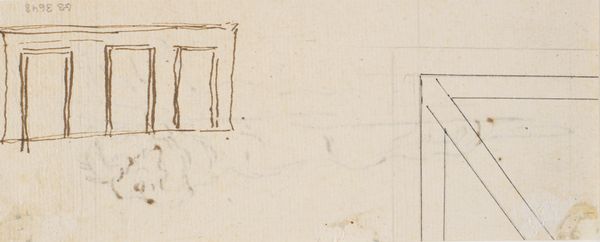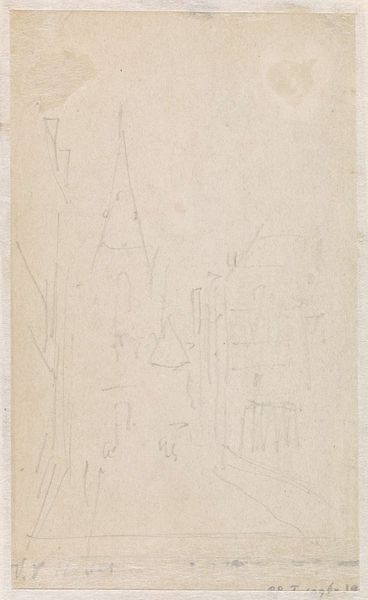
drawing, pencil
#
drawing
#
form
#
pencil
#
line
#
history-painting
Dimensions: overall: 6.3 x 9.3 cm (2 1/2 x 3 11/16 in.)
Copyright: National Gallery of Art: CC0 1.0
Curator: John Flaxman sketched this "Designs for a Monument," employing a minimal pencil line. The figures and architectural elements barely emerge from the paper’s surface. Editor: It looks preliminary, like an echo of a grand idea rather than something fully formed. You can almost feel the hand quickly moving across the page to capture a fleeting inspiration. The sparseness creates a real sense of openness, almost an ethereal quality. Curator: Precisely. Flaxman was deeply interested in the monument as a public symbol, an instrument to teach history and morals. Notice how even in this quick sketch, there’s an ambition towards civic art and its potential societal role. His drawings for Wedgwood, his work popularizing Homer--it all points toward making classical virtues accessible and instructing the public. Editor: I see that aspiration toward the civic, but what strikes me more is how immediate the creative process feels. The lines themselves are so thin and light— the material impact is minimal. It reminds us of how the grandest artistic projects often begin, with the physical humbleness of a simple drawing implement, like a graphite pencil. The labor, though seemingly effortless here, would’ve translated to significant skill in the sculptural workshops that fabricated these pieces at scale. Curator: Yes, and thinking of the social and political conditions, Britain during Flaxman's era grappled with its national identity amidst the Napoleonic Wars. These monuments served as visual statements that not only celebrated British heroes but also reinforced political ideals about empire and heroism for the burgeoning middle classes consuming them. Editor: The very materiality is key to understanding. Think of the kinds of stone, the transportation involved, the workshops that carve and assemble monumental forms. It’s a massive undertaking with so many social actors and labor divisions tied to resource extraction and capitalist expansion. A pencil sketch such as this reduces such scale back to its rawest potential. Curator: An interesting point indeed! It makes me reflect again on the broader cultural forces driving monument construction. Perhaps the fragility of this sketch reveals more about their symbolic strength that physical presence? Editor: Maybe. For me, it shows the power that lies not just in a finished project but also within those often overlooked spaces where art begins-- where the hand meets the page, fueled by material necessity.
Comments
No comments
Be the first to comment and join the conversation on the ultimate creative platform.

